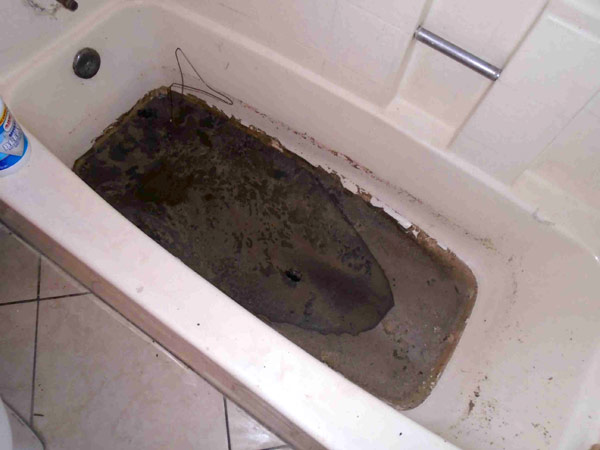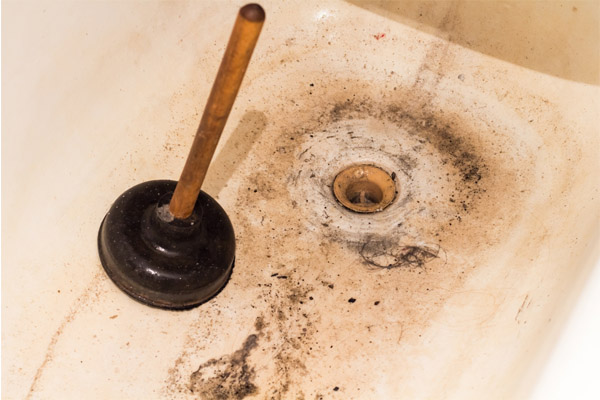Investigating the Phenomenon of Discharge Rising Through the Bathtub
Investigating the Phenomenon of Discharge Rising Through the Bathtub
Blog Article
Just how do you really feel on the subject of Why is Sewage Backing Up Into My Bathtub??

Sewage back-up in the bath tub can be an upsetting and unhygienic issue for any house owner. Not just is it inconvenient, but it likewise presents major health and wellness threats and suggests underlying issues with the plumbing system. Understanding why sewage is coming up with the tub is important for taking suitable action to resolve the problem properly.
Introduction to the Concern
Common Reasons for Sewer Backup
Obstructions in the Sewage System Line
Among one of the most typical sources of sewage back-up is a blockage in the sewer line. This can take place because of the build-up of particles, oil, or foreign things in the pipelines, stopping correct circulation and triggering sewage to support into your bath tub.
Tree Origin Breach
Tree roots looking for wetness and nutrients can penetrate sewer lines with tiny fractures or joints. In time, these origins can expand and increase, triggering significant damage to the pipelines and bring about sewage backup issues.
Understanding the Problem
When sewer starts backing up into the bath tub, it's a clear indicator of a problem with the water drainage system. The wastewater that ought to be streaming away from your home is rather discovering its way back right into your living space, which can result in substantial damages and health hazards.
Potential Causes
Several factors can add to sewer back-up in the tub. From obstructions in the sewer line to problems with the plumbing facilities, determining the origin is important for discovering an option.
Aging Infrastructure
Older homes might have outdated plumbing systems that are much more vulnerable to rust, fractures, and damage. As pipes age, they end up being much more vulnerable to leakages and blockages, boosting the chance of sewer back-up events.
Heavy Rainfall or Flooding
Throughout periods of heavy rainfall or flooding, the sewer system might become overwhelmed with excess water, causing back-ups and overflows. This can result in sewage supporting right into tubs and other components inside the home.
Indications of Sewage Back-up
Foul Odors
Undesirable smells rising from drains or fixtures, especially in the washroom, may show sewage backup issues. These smells are typically strong and persistent, signaling an issue that requires instant attention.
Slow Draining Fixtures
Bathtubs, sinks, and commodes that drain pipes slowly or not in all could be experiencing sewage back-up. If multiple fixtures are affected all at once, it's likely that the problem originates from an usual point, such as the major drain line.
Gurgling Sounds
Unusual gurgling or gurgling noises coming from drains pipes when water is running elsewhere in your house are indicative of air entraped in the plumbing system. This air accumulation can arise from sewage back-up and ought to be investigated immediately.
Wellness Risks Related To Sewer Backup
Contamination of Water System
Sewage backup can pollute the water system in your home, posing a serious health and wellness danger to you and your family. Direct exposure to infected water can bring about gastrointestinal concerns, skin infections, and other illnesses.
Mold and mildew Growth
Dampness from sewage backup can produce perfect problems for mold and mildew development in your home. Mold and mildew spores can worsen respiratory troubles and cause allergic reactions in sensitive people, making timely clean-up vital.
Spread of Condition
Sewage includes hazardous germs, infections, and parasites that can cause a range of conditions, including hepatitis, cholera, and gastroenteritis. Coming into contact with sewer or contaminated surfaces puts you in danger of infection.
Tidying up After Sewage Back-up
Disinfection Procedures
Completely decontaminate and sterilize impacted areas after sewage back-up to get rid of damaging germs and stop mold development. Use ideal cleansing items and protective equipment to guarantee safe and effective clean-up.
Repair of Affected Areas
Repair any damages to flooring, wall surfaces, or fixtures brought on by sewage backup. Relying on the extent of the damage, you may require to replace carpeting, drywall, or various other materials to restore your home to its pre-loss condition.
Immediate Actions to Take
Turning Off Water
In the event of sewage backup, it's essential to turn off the water system to avoid further contamination and damages. Situate the major water shutoff valve in your house and shut it off up until the issue can be resolved.
Contacting a Specialist Plumber
Taking care of sewer back-up is not a do it yourself work. Get in touch with an accredited plumber with experience in dealing with sewage-related concerns to assess the circumstance and perform necessary repairs or clean-ups.
Staying Clear Of Contact with Infected Water
Till the sewage backup is resolved, prevent contact with infected water to avoid the spread of germs and virus. Put on protective gear if you have to be in the damaged location and clean your hands extensively afterward.
Safety nets
Regular Upkeep of Sewer Lines
Set up normal assessments and upkeep of your sewer lines to determine and resolve possible concerns before they intensify into significant troubles. This can include cleaning debris, inspecting for tree root invasion, and fixing any type of broken pipelines.
Setting Up Backwater Valves
Take into consideration setting up bayou shutoffs in your plumbing system to stop sewer from receding right into your home throughout durations of heavy rainfall or flooding. These shutoffs instantly close when water starts backing up, shielding your property from contamination.
Appropriate Disposal of Home Waste
Prevent purging anything other than bathroom tissue and human waste down the commode to stop blockages and blockages in the sewer line. Dispose of oil, oil, and other home chemicals effectively to reduce the danger of plumbing troubles.
Why Is Water Backing Up in My Bathtub When I Flush My Toilet?
What to do about a sewer line clog
First, don’t bother with plunging. No amount of plunging will dislodge the clog in a sewer line. The clog is too far away. Plungers are for clogs in the toilet itself, not the sewer line. Plus, the most likely causes of a sewer clog are:
Tree roots Flushed toys or feminine products Grease buildup Those items don’t move easily. And in the case of tree roots, the roots need to be cut out of the pipe and the pipe will need to be repaired.
You’ll need a closet auger. A closet auger is a type of plumber’s snake with a protective cover to keep from scratching the delicate porcelain toilet. If the clog is further down, you may need to remove the toilet or use one of your cleanouts to get to the clog.
We also recommend doing a video inspection of the drain to ensure that the cause of the clog has been completely removed. Otherwise, you could have the same problem again in a few days or weeks.
https://mspplumbingheatingair.com/blog/why-is-water-backing-up-in-my-bathtub-when-i-flush-my-toilet

I stumbled upon that content about Why is There Sewage Coming Up Through the Bathtub when doing a lookup on the search engines. Kindly take a moment to distribute this post if you liked it. I praise you for being here. Don't forget to visit our website back soon.
Get A Quote
Report this page